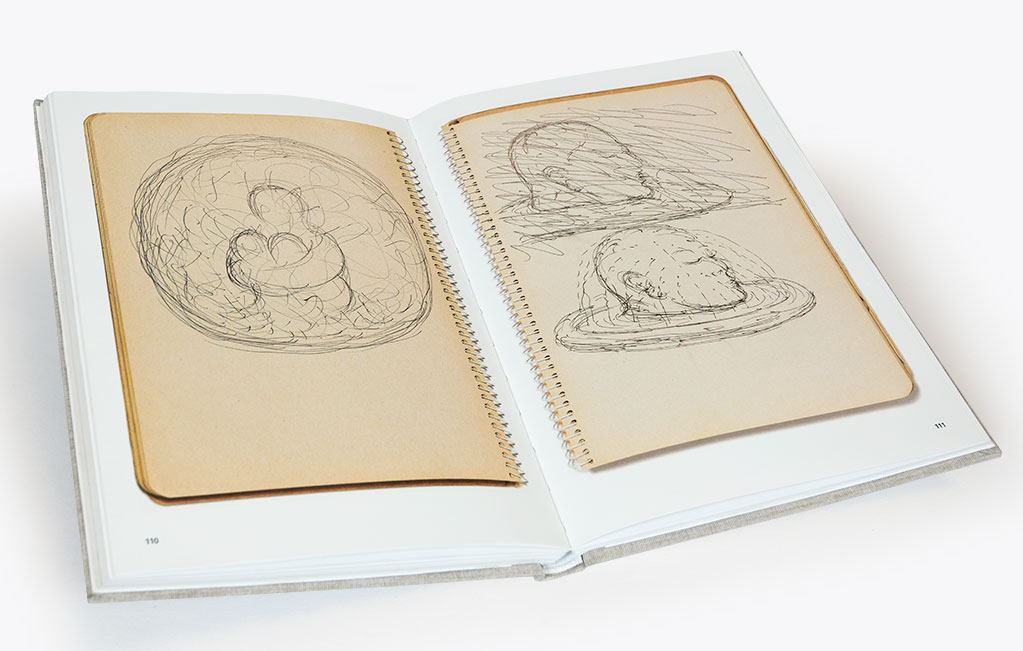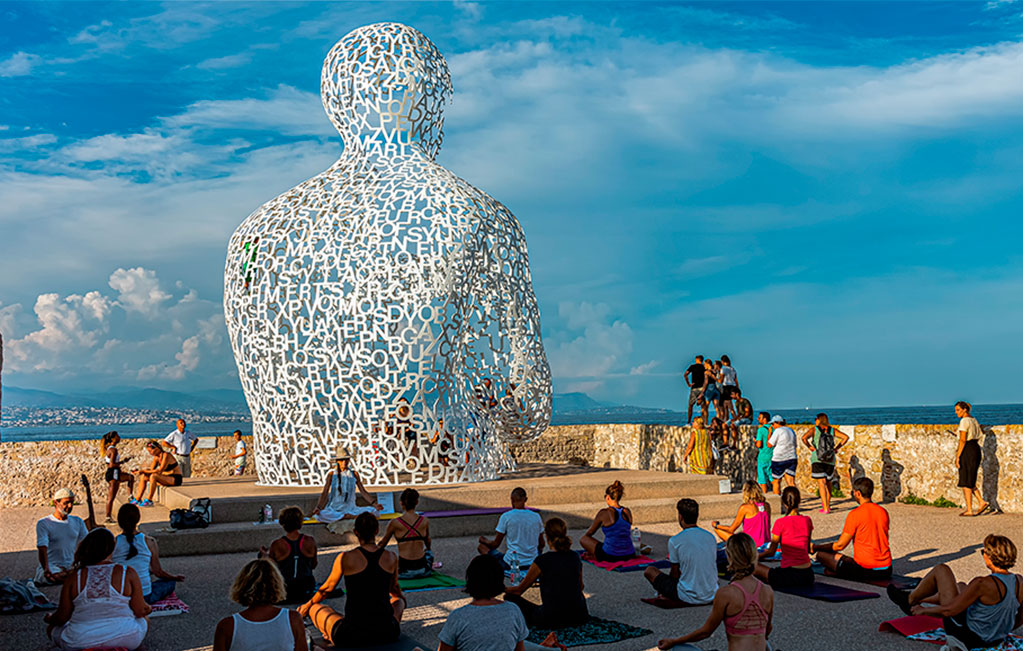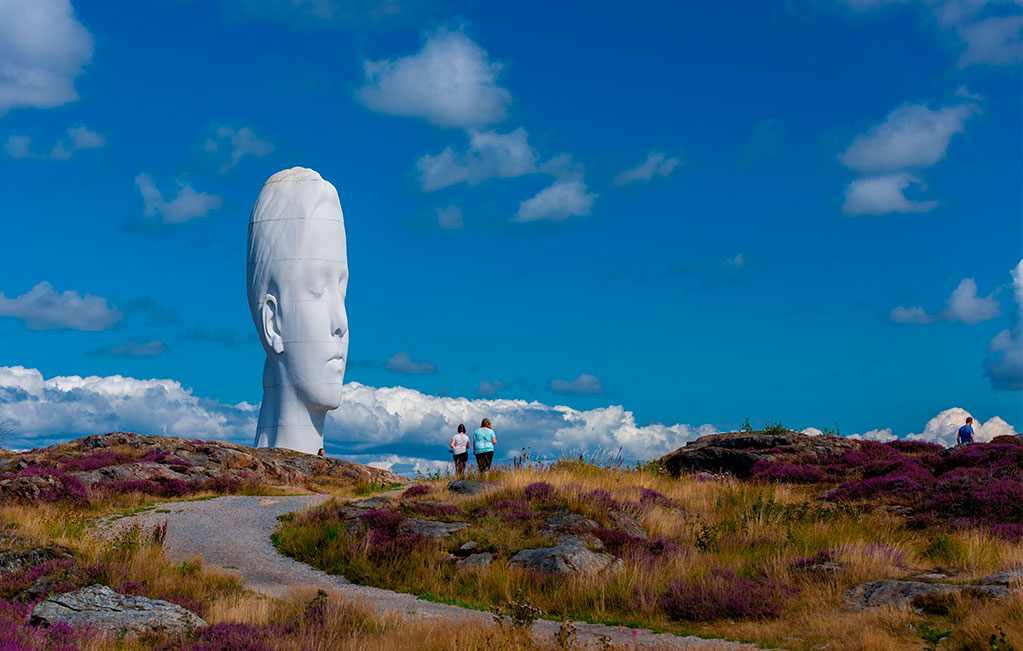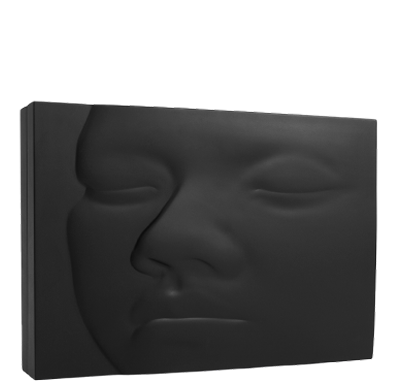The studio, where Plensa’s ideas become reality
On August 23, contemporary art celebrates the birth of one of its most intriguing figures, born on this date in 1955 in Barcelona. Jaume Plensa is famous worldwide for his sculptures but also for his drawings, opera sets, video projections, and acoustic installations. Where is a studio capable of conceiving such varied and original works hidden?
The faces, figures, and symbols of artist Jaume Plensa‘s sculptures beautify corners of the world: from his native Barcelona to the epicenter of world art, New York, as well as Sweden, Tokyo, Bordeaux, Singapore, and Rio de Janeiro. One of the most international artists of our time spends much of his life traveling, inaugurating pieces, and seeking inspiration here and there. When asked when he finds time to be in his studio, he is clear: his studio always goes with him; it is his head, it is in his mind.

El corazón secreto, 2014 (The Secret Heart, 2014). Installation view at the Faculty of Medicine, University of Barcelona. Presented by Hospital Clínic, Barcelona, 2023. Fabric filled with air and synthetic material, 13 meters tall.
Of course, the mind alone is not enough for a monumental several-meter-high face to gaze and be gazed at on an avenue in the Big Apple, but it is the first and unavoidable step. Thus, Plensa sees his physical studio or workshop as an extension or expansion of his thought, a place to build. But everything he will do and how he will do it already exists in his other studio, the first one, inside his head. For Plensa, ideas are born already with a material, dimensions, forms, and scales.

And his mind, like his physical workshop, can boast of unique and inimitable order and organization. His extensive artistic repertoire attests to this, and his mind accommodates and coexists without conflict materials as diverse as stone, resin, wood, glass, cast iron, or bronze. Among all these, he creates works as disparate as colossal faces inviting silence, planets made from symbols as allegories of language and communication, and fantasy projections that put people at the center of art…
Such a variety of works has led many visitors to his exhibitions to think they were at group events of several artists when, in reality, everything they saw emanated from a single workshop, a single mind… the mind of Jaume Plensa.
This inner world is essential to understanding the sculptor’s work: his work not only opens his mind to us but -more importantly- invites us to pause, to stop feeling dragged by this fast-paced, stimulus-filled world, to close our eyes to everything and thus be able to see our inner world. Only with our eyes closed, wrapped in that silence his sculptures demand with a finger to their lips, can we see the landscapes and all the wonderful information uniquely hidden within each of us.
If Plensa’s reflections materialize in works capable of beautifying and enriching the world around us, their intention when observed is precisely to nourish our inner world, which, according to the author, keeps us “upright” and advancing through life. Sculpture is the ideal medium for this, being defined by the artist as the relationship between the material and the immaterial, between our tangible humanity and our untouchable soul. This duality, so typical of Plensa, materializes in each of his sculptures, a bridge between what we see and what we feel.

Nomade, 2010, Bastion Saint-Jaume, Port Vauban, Antibes, France.
Therefore, the result of Plensa’s works, materialized in complex sculptures of high technical innovation capable of surprising in any city in the world, constantly plays with this contrast or duality between what is seen and what is not: the transparencies of heads made of nearly invisible metal filaments depending on the light, sculptures made of universal symbols allowing the viewer to see what is behind, or those enormous faces that close their eyes to invite us to do the same.
Thus, Jaume Plensa tries to invite us simultaneously not only to the workshop of his artistic mind but to the inner world of each one’s mind, convinced that inside each spectator is an immeasurable, unique, and original universe, sometimes limited or conditioned by the environment. The spiritual function of his works, some located in the center of bustling cities and others hidden among the vegetation of inhospitable corners, fulfills the same function.

Anna, 2015. Klövedal, Sweden.
Jaume Plensa’s mind contemplates, appreciates, and encapsulates reality to transfigure it, going beyond the obvious and helping us discover new ways of looking at the world, of being in the world, extracting everything it can offer us if we observe it with the right gaze, even if sometimes that involves closing our eyes.
With this conception of the artist’s mind, the two collaborations of Jaume Plensa with ARTIKA were born: 58 -now sold out- and Jaume Plensa 61. The sculptures conceived by the artist for both editions are two faces, two heads of those he likes so much, inviting silence and introspection. Inside, in the closest expression possible to his mind, are the exclusive books that lovingly and craftily showcase the inner world and workshop of one of the most international artists in our country.
Jaume Plensa 61: a journey to the hidden workshop of a genius
Jaume Plensa himself has closely collaborated with ARTIKA to create a unique piece in which he reveals the corners of his studio and his mind, the place where his art is created and takes shape before moving a world in need of looking inward.
– Numbered and limited edition of 2,998 copies.
– The piece consists of two volumes and a sculpture-case with the face of Mar, the girl conceived by the artist as an allegory of the global and plural world in which his works live.
– The Art Book reveals not only his great works but also the physical space and creation processes that make them possible, with reflections from the artist and spectacular photographs.
– The Study Book, Apuntes y anotaciones (Notes and Annotations) constitute the bridge between the ideas in Plensa’s mind and the materialized work in his studio, reproducing the pages of notebooks in his own handwriting where he pours his boundless inner world with each stroke and each note.


